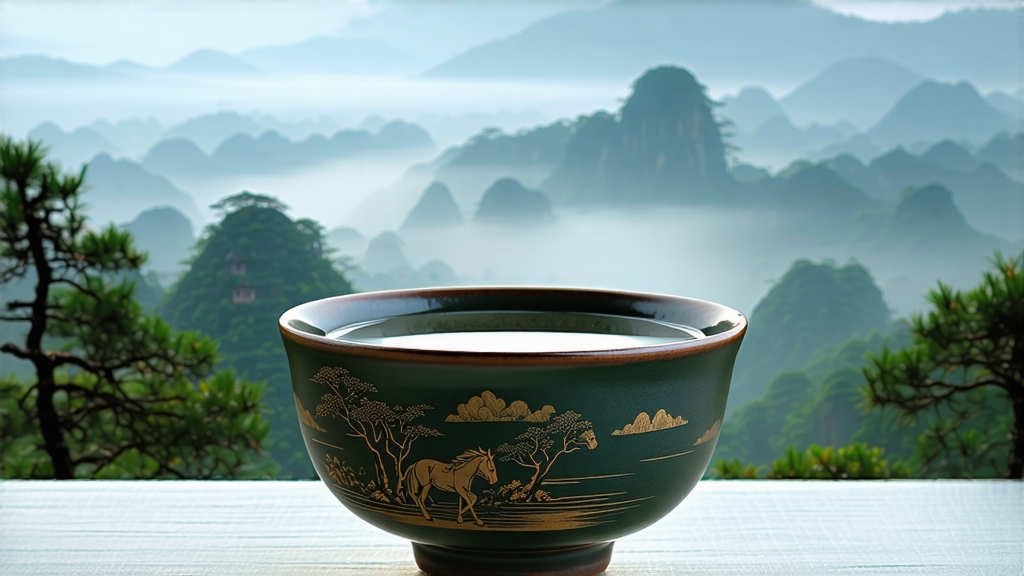
Ask most tea lovers outside China to name a Chinese black tea and the answer is often “Keemun” or “Yunnan Gold.” Few realize that the very first black tea ever created—long before those famous styles—was born in the craggy, pine-clad Wuyi Mountains of northern Fujian. Called Zheng Shan Xiao Zhong in Chinese and marketed abroad as Lapsang Souchong, this leaf is both the progenitor of every Chinese red (hong) tea and a living time-capsule of 17th-century craft. Its signature campfire aroma divides novices and addicts, yet behind the smoke lies a surprisingly refined liquor that once perfumed the courts of Europe and launched a thousand clipper ships.
History: from Ming dynasty border tax to London coffeehouses
Local legend fixes the birth year at 1610, when Wuyi tea farmers, late with their spring green tea due to bandits on the mountain pass, hastily dried the oxidizing leaves over fresh pinewood to prevent spoilage. The accidental smoke infusion proved irresistible to the Dutch traders at Xiamen port who first carried it to Batavia and then to Amsterdam. By 1662, when Catherine of Braganza brought a chest to London as part of her dowry to Charles II, “Bohea tea” (a corruption of “Wuyi”) became the fashionable drink of Restoration England. The East India Company’s records show that Lapsang Souchong commanded twice the price of green tea at auction; its robust character traveled well across equatorial seas and adulterated gracefully with sugar and milk, setting the template for the English breakfast habit that would soon circle the globe.
Terroir: why only Tongmu village can claim the original name
The Chinese government now restricts the geographical indication “Zheng Shan Xiao Zhong” to 680 square kilometers within the Wuyi National Nature Reserve. The core micro-zone is Tongmu Guan, a mist-locked gorge at 27° N latitude where the Min River cuts through granite cliffs. Here, day-night temperature swings of 15 °C force slow growth, concentrating amino acids, while the subtropical forest sheds pine needles and camphor leaves that compost into acidic, mineral-rich soil. Wild pollinators cross-breed the indigenous small-leaf cultivar C. sinensis var. bohea with nearby ancient tea trees, creating a genetic pool that resists pests without chemicals. The same fog that veils the peaks also acts as a natural smoke chamber during the final firing stage, allowing resinous volatiles to bond gently with the leaf.
Craft: four centuries of tweaking accident into art
Although modern factories can turn out smoke-flavored black tea anywhere, orthodox Tongmu production still follows a 24-hour choreography that begins at 3 a.m. when dew weight is highest.
- Plucking: only the unopened bud and first two leaves are taken, when catechins and polyphenol oxidase reach a 3:2 ratio ideal for brisk oxidation.
- Withering: trays of fresh leaf rest on bamboo racks above pinewood embers in an open loft. Convection heat (38 °C) reduces moisture to 60 % within two hours while absorbing terpene-rich smoke.
- Rolling: a 45-minute gentle bruising on fir-wood boards ruptures 30 % of cell walls, releasing juice without the heat build-up that stainless-steel rollers can cause.
- Oxidation: leaf piles 8 cm deep rest in pine-log crates inside a cave-like room kept at 26 °C and 85 % humidity. Over three hours the leaf turns from jade to copper, developing malty theaflavins and hints of longan fruit.
- Smoking & firing: the critical dual-stage that defines style. Craftspeople transfer the oxidized leaf into a lower loft directly above a pinewood hearth. A smoldering fire (no flames) of 40 % resinous Masson pine and 60 % local cedar is kept at 90 °C for two hours, then allowed to die down overnight. In the morning the leaf is quickly pan-fired at 120 °C for 20 minutes to fix the aroma and drop moisture to 5 %. The result is a strip-style leaf, glossy black with golden tips, carrying 0.3–0.6 % guaiacol and 4-methylguaiacol—the same molecules that give bacon its scent.
Grades & styles: not all smoke is